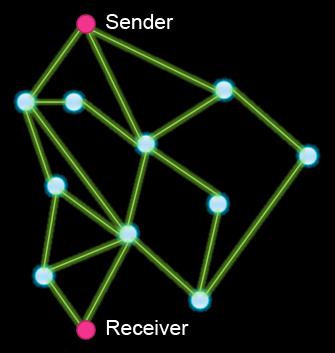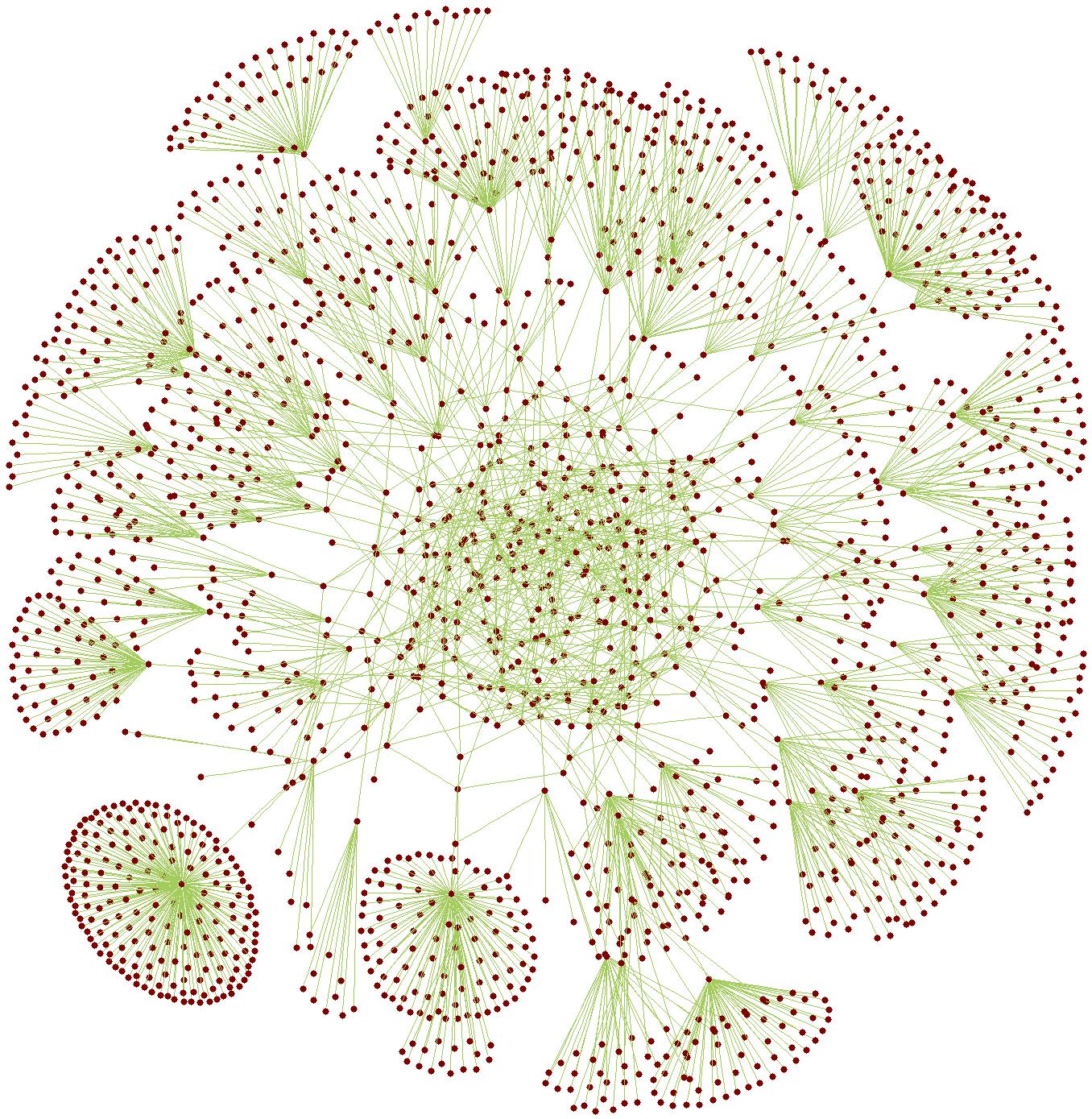Prevents loss of data due malfunction of user’s personal computer.
Page 1: What Is the Internet?
Unit 4, Lab 1, Page 1
Consider adding BTB content back:
Several pages in this lab suggest a brief reading from the Blown to Bits appendix in the “If There Is Time” sections:
- Page 1: Addresses in a Network of Networks: IP. Blown to Bits pages 301-306.
- Page 2: Reliable Transmission on Unreliable Networks: TCP. Blown to Bits pages 306-309.
- Page 3: A Hierarchy of Open Protocols. Blown to Bits pages 309-312
- Page 4: Who’s in Charge of the Internet? Blown to Bits pages 312-316. Ideally, this assignment will be read before the class period that covers that lab page.
In this lab, you will learn how the Internet works.
On this page, you will learn the basics of what the Internet is, what’s most important about how it works, and what it means to store information in “the cloud.”
-
The Internet is a computer network that uses open protocols to standardize communication. A computing device connected to an Internet-connected device is required to access the Internet.
- A computer network is an interconnected computing system that is capable of sending or receiving data.
- A computing system is a group of computing devices and programs working together for a common purpose.
- A computing device is a physical object that can run a program, such as computers, tablets, cell phones, and smart sensors.
- The World Wide Web is a system of linked pages, programs, and files that uses the Internet.
People talk as if “the Internet” and “the World Wide Web” are the same thing, but they are not. The Internet is a network of independent but connected computing devices spread out all over the world. The World Wide Web is the collection of interlinked website documents that you can view with a web browser by typing an address like https://snap.berkeley.edu/snap/snap.html. Most web pages are written with HTML (HyperText Markup Language) and interpreted by your browser using HTTP (HyperText Transfer Protocol).
The Internet is more general than the World Wide Web. It also supports email, mobile apps, texting (SMS or Short Message Service), file transfers, and many other ways that computers communicate.
-


What is the difference between the Internet and the World Wide Web?
CSN-1.D (in #1)
IOC-1.B.1
The World Wide Web has grown far beyond its original purpose, which was rapid and easy exchange of information within the scientific community. The expansion of the Web to include things like online shopping and personal blogs was an unintended consequence of the technology.
CSN-1.B.1 (“open” part), CSN-1.E.1

How Does the Internet Work?
The Internet is a massive network of computers that facilitate communication around the globe. It works because it’s engineered to be fault-tolerant (capable of working even if some of the network breaks down) and uses protocols (a type of abstraction) for routing and transmitting data:
- The Internet is fault-tolerant because it is a redundant network. There are multiple pathways among its physical connections to create redundancy. Even if one pathway is unavailable, there is still another way to transmit a message from sender to receiver (as shown right). Software in the connection points knows how to re-route data if one connection fails.
- Data is transmitted via open protocols. Protocols standardize communication, so all data is sent by the same rules for sending and receiving the data. These protocols are open (available for use by anyone) to ensure that anyone can build systems that connect to the Internet.
The Internet isn’t just a network of computers, though. It’s a network of networks. The connection points between networks are called routers, networking devices that route traffic between subnetworks on the Internet. Making sense of the information happens at the destination computer.
Image from UC San Diego Jacobs School of Engineering.
- A router is a computer that passes information from one network to another.
- ISPs (Internet Service Providers) are the companies who sell Internet access to homes and institutions.
Your computer probably uses a router that is somewhere in your home to connect to your ISP.
The computers connected to the Internet and the connections among them don’t belong to any one organization. Different ISPs provide the Internet to different communities. And typically within a large organization (such as a university), the Internet connections are provided by the organization itself.
- Why does the graph of the Internet look like a tangle in the middle with fireworks on the outside?
- Discuss how this shape is related to how people connect to the Internet (though an ISP, etc.). Write out a brief description and/or explain it to someone else.
-
CSN-1.A

 Describe how computing devices are connected in a network.
Describe how computing devices are connected in a network.
![]()
What Is the Cloud?
- Bandwidth is the maximum amount of data that can be sent in a fixed amount of time (for digital data, it is measured in bits per second). Higher bandwidth is better because the data will travel more quickly.
- Storing data in the cloud means storing it somewhere on the Internet, but you don’t know where. The cloud service provider (Google, Dropbox, Amazon, Snap!, etc.) manages the actual storage location.
In the early days of the Internet, bandwidth was slow, so people couldn’t send video (only text and small pictures). Back then, computers were huge and expensive, so people went to a computer center to do their computations. As the technology became smaller and more efficient, however, these centers became less important because people could do computations on personal computing devices.
More recently, though, certain kinds of computation (such as web searches and voice recognition) require more computational power, and these tasks are instead sent to huge “computer farms” where tens of thousands of computers work together on a problem. These computer farms, all together, are referred to as the cloud. You have been using the cloud throughout this course: all of your Snap! projects are stored in the cloud. You still use computer at your desk, but some of the programs actually run on the cloud.
When you save your Snap! projects to your account, they aren’t stored on your local computer but on the cloud; that’s why you have to log in to access them. Similarly, if you use Google Drive or Dropbox, all of those files are stored in the cloud. And if you use a web-based email service (such as Gmail or Yahoo), your emails are stored in the cloud too.
-
Which of the following is not an advantage of storing data using cloud computing?
This is a main advantage of cloud computing.
Easy to scale up from individual use to implementation by large companies.
This is a main advantage of cloud computing.
Has potential to be environmentally friendly due to many users efficiently sharing large systems and resources.
This is a main potential advantage of cloud computing.
Improved security and privacy over storing data on a personal computer.
Correct. With cloud computing, you are trusting someone else with your data.
